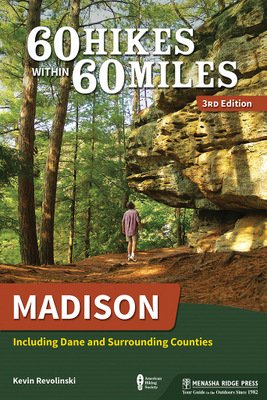Staying at an Agriturismo in Sicily
A Delicious Way to Stay in Italy
Signora La Rocca swung out into traffic, one hand on the horn announcing her imminent arrival at every intersection. She received a cell call, put it on speaker phone, and shouted to the man on the other end, all the while weaving the wheel tightly like someone in a car chase. Suddenly she would interject and point out a landmark as we passed. She had on big dark sunglasses and though she was in her mid-70s I was quite sure that her reaction speed was better than my own as she downshifted, passed a pokey BMW and swerved back into her lane before oncoming traffic had a chance to flick their lights.
Signora La Rocca had agreed to meet me at her house in Catania and give me a lift out to her agriturismo just 15 km out of town, la Casa dello Scirocco. We crossed a river and she interrupted another business call to tell me, “Fiume Simeto, the biggest in Sicily.” She hung up and she started pointing at trees: “Olive,” she said, “palm, eucalyptus.” Moments later as we passed a field I asked her what kind of flowers they were. “Those? Just dumb weeds.” The dumb weeds turned the vast expanses of the plains into undulating seas of gold.

We arrived at the edge of the small town of Lentini and turned into a long narrow canyon filled with trees. Just past the gate I could see the main hall with the dining room and kitchen. To my right were a couple of horses grazing in a small corral. La Signora was out of the car and halfway up the walk before I could even get my seatbelt undone.
La Rocca treads the earth like someone on a race against the clock. It seemed quite un-Italian I thought. As she lit a cigarette, she listed off some of the places she has lived, South America, Fort Lauderdale, China. She speaks bits and pieces of a variety of languages, but she avoids speaking English as it is a bit rusty and she has no patience for her tongue to come up with the right word. She is a mover and a shaker if there ever was one, and anyone who doubts need only hear the story of her property. That day she took me and a small group of her Swiss friends around and told us how it all came into being before stunning us with the day’s menu.

She had inherited the land from the uncle of her ex-husband. It was a surprise to her, but the uncle had never liked his nephew and bequeathing what was a failing orange grove to La Rocca was perhaps a gesture of disdain toward him. But the inheritance was less orange and more lemon; the land had debts on it that exceeded its value. One day La Rocca was out walking the 20 hectares quite unsure what to do with it when she happened upon a hole in the ground. A deep hole. She got curious and decided to dig. When she found a stone wall, she got excited. She would spend the next two years—often just her all alone with a shovel—excavating to find a Roman structure built into a pre-historic grotto and buried in the shallow canyon.
She did her research and little by little the story had emerged. Baron Fuccio Corbino had discovered it before her and converted it into his own little villa in the 18th century. It included a small Roman/Turkish bath and a system of little channels running through every room carrying spring water. The system kept the rooms cool in the summer and the Baron was quite fond of the sound of running water. But upon his death, his family discovered the place. Mistaking it for a “house of sin” they brought in sand from outside to bury what they believed was sure to be an embarrassment to them. And there it lay hidden and preserved until the then sixtyish Signora rolled up her sleeves in the 1992 and grabbed a shovel. Since then she has decorated it with oriental motives popular from Corbino’s time period. A fountain bubbles inside the garden walls out front and the walkway shaded by trees seems a corridor to another world.

Guests have the choice of staying in small bungalows, a new multi-unit structure with lofts, or some small caves that have been fashioned into cozy sleeping quarters. One grotto has been converted into a small museum dedicated to the life of the peasant farmer. Inside are the sleeping and cooking areas as they were in yesteryear and a collection of artifacts from a day not too far in Sicily’s past. The soot of cooking fires still stains the rock surface above.
My feet kicked up a bit of dust as I walked along the dirt road that curved through the orange grove back toward the dining room; above us on the low ridge prickly pear cacti and fig trees were just blossoming. A couple horses looked up from where they were grazing at the road side and then ignored me. I passed the chicken coop. It was a cave carved out of the wall of the canyon with a fence enclosing the area in front of it. I paused and looked down to see what the hens were being fed. The ground was scattered with leftover pasta. “No doubt about it,” I thought, “they’re Italian.”
Now we were about to start the part of the tour which I had been eagerly awaiting. Italian cooking is famous the world over, but Sicilian cuisine, if Signora La Rocca has anything to say about it, is the best.

We ate lunch in a large dining room with dark wood ceilings. Two walls were plate glass windows looking out into sunlit gardens and fruit groves where much of the meal had recently been picked. “There is no menu,” Signora La Rocca warned us. “We start with a sack of antipasti.” The waitress wheeled out a cart and began to fill every available square inch of the table with plates. We dug into bruschetta with eggplant and sesame; goat cheese with oil and spicy pepper; local olives; an onion and tomato-filled pastry; deep-fried onions; caponata; arancini; a tortino di carne, a meatball wrapped in eggplant strips with onion, cheese and tomato sauce topped with a couple basil leaves almost too beautiful to put a fork into. Almost. In between mouthfuls we drank the hearty red wine produced in house. Il primo piatto was Sicilian pizza.
“You won’t find this in most pizzerias in Sicily, but this is the authentic Sicilian pizza.” It resembled a large calzone but the pastry was very light, flaky and deep-fried. Inside was goat cheese and just a trace of anchovy. Just when I thought perhaps I had reached my limit, the second plate was rolled out. Tender grilled beef strips with fresh rosemary and basil, alongside fried potatoes flavored with the same. We finished the plate with a light salad of fresh greens, red cabbage, corn and grapefruit from the trees outside the window. Dessert was homemade almond ice cream with a sweet almond sauce and a twirl of chocolate.
It wasn’t until the end of this meal that I felt I had finally arrived in Italy.
_____________________________

Casa dello Scirocco, named after the hot African wind that carries rain and misplaced desert over Sicily from time to time, sits just outside the town of Lentini. Tucked into a narrow canyon it offers the dual benefits of being quiet and secluded without being far off the tourist path. All rooms have bathrooms and a small refrigerator and hotplate. Some provide fireplaces as well as televisions. There are bikes for rent, a corral for horseback riding, and a swimming pool shaded by eucalyptus trees. Casa dello Scirocco also offers a five-day cooking course.
High season is all over the place it seems, but this leaves some openings in any season for some lower prices. High season (alta stagione) is the week around Easter, last weeks of April into May, July to the first weekend in September, and the first weekend in November. Prices at this time are 65/80 Euros for room and half board or full board, but go down to 52/68 Euros in low season. (Up to date conversion from Euros here.
Casa dello Scirocco, Contrada Piscitello, Carlentini (SR), 095-447-709 or 338-172-0112, tel/fax 095-7836-120, www.casadelloscirocco.it, email: info@casadelloscirocco.it. For children 2 to 10 there is a 35% discount. Cribs are available.
You are close to Siracusa, Mount Etna, Taormina, and Catania as well as many other Sicilian destinations.



 ORDER YOUR COPY TODAY!
ORDER YOUR COPY TODAY! ORDER YOUR COPY TODAY!
ORDER YOUR COPY TODAY!
Pingback: If I Had a Hammer: Carnival in Sicily